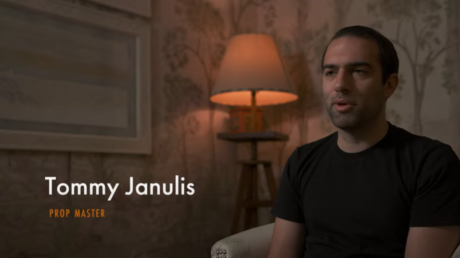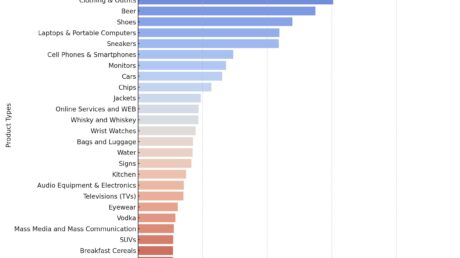Product placement integrates brands into some of the entertainment industry’s greatest moments. Audiences applauded Anne Hathaway’s character when she told her high-and-mighty colleague that she was in fact wearing the Chanel boots in The Devil Wears Prada (a film that has a product in its very name). Viewers laughed ironically alongside the main characters in Wayne’s World as they sampled different brands’ food and beverages while declaring they’d never “sell out.”
Product placement allows brands to capture viewers’ attention in a way that traditional advertising simply can’t. Brands are taking note. At a time when marketers have decreased their traditional advertising spend, product placement spending surged to $23 billion in 2021, and by 2024, 70% of brands will deploy at least 10% of their media budget to product placement in entertainment content.
By keeping viewers inside a story, your brand can boost awareness, avoid market saturation and confusion, and even become a part of larger cultural conversations.
Brand recognition matters. With 78% of consumers purchasing products from brands they know, marketers see product placement as a golden opportunity to get in front of their target audience. It’s not as much a question of why product placement, but really, what type of product placement?
Brands can pursue four approaches to product placement:
- Story-driven placement
- Prop placement
- Branded content
- Virtual placement
This article explores product placement’s different approaches and how your brand can determine which one(s) will help you reach your campaign KPIs.
Story-Driven Placements: Your Role in Building Authentic Narratives & Characters
Otherwise known as narrative placements, story-driven placements are all about authenticity. They often take form in verbal product mentions, products appearing in stories post-production (like seeing a company’s website on a laptop), or a branded moment that drives the story or character’s development forward.
Story-driven placements are powerful, so much so that they shape the narrative or even define a character. Look at Daisy’s Red Ryder BB Gun in A Christmas Story or White Castle in Harold & Kumar Go to White Castle. Products are central to both films’ plots and spark action from the main characters, whether it’s Ralphie desperately hoping for Santa to bring the BB gun, or two friends on a mission to secure tasty burgers. In some cases, story-driven placements may even become a character like Wilson in Cast Away. Fans felt Tom Hanks’ character’s piercing pain as the volleyball drifted further from his desperate reach as he cried out, “Wilson!” repeatedly.
Story-driven placements weave your brand into content to help bring the production partner’s creative vision to life and create a stellar experience for viewers.
Accomplish Your Campaign Goals with Story-Driven Placement
Story-driven placements can drive big rewards for your brand, but they do take a considerable amount of time and money. These placements typically require an upfront investment and usually have a development period of 4 to 15 months (pending the type of content) before you see results.
The good news is all brands can pursue story-driven placements and meet their campaign goals through its many benefits, such as:
- Extremely high levels of authenticity: Story-driven placements immerse viewers into the story, rather than distracting from it. Successful integrations ensure that your brand’s goals align with the production partner’s creative vision.
- Helping your brand stand out: Unlike traditional advertising, story-driven placements embed your brand into what’s going on in modern society and therefore make you a part of the cultural conversation.
- Significant exposure: Get high-on screen prominence by weaving your products into buzz-worthy content, like the newest season of a highly-viewed comedy or a drama film with that year’s most sought-after actor. It’s a great way to introduce or warm audiences to your brand.
- Measuring success: Story-driven placements have both scale and longevity. Many viewers watch and rewatch their favorite movie or binge-worthy show, so your brand has the opportunity time and time again to get in front of viewers so your investment pays off.
Eggo Sales Jumped 14% from a “Stranger Things” Character’s Waffles Obsession
Eleven, the mysterious character in Netflix’s breakout show Stranger Things doesn’t just like Kelloggs’ Eggo waffles. She’s obsessed. After escaping Hawkins National Laboratory in season one, Eleven had one thing on her mind: waffles. She ventured to the local supermarket immediately to secure some Eggos, showing that her love of waffles outweighed the risk of being captured.
Eggo continued as a common thread through the series. Viewers started talking about the brand and flocked to their own stores to purchase the waffles. After the Stranger Things season two release, Eggo received its highest number of social media mentions and increased sales by upwards of 14%. The brand also boosted sales by an additional 9.4% in 2018’s first quarter.
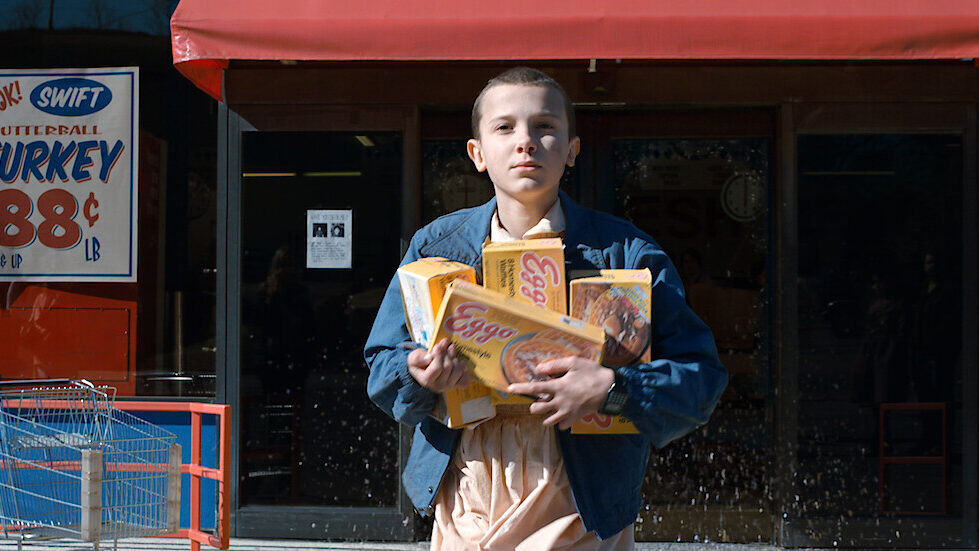
Eggo Waffles made a splash in 1970 when introducing the famous tagline, “L’Eggo my Eggo.” While the brand is still the bestselling frozen waffle in North America, the brand faced a flurry of other competitors looking to stake their claim in the breakfast-to-go space. Stranger Things brought Eggo Waffles back into the conversation. Kellogg’s Chief Executive Steven Cahillane said the series made Eggo culturally relevant and prompted viewers to reconsider Eggo when making purchases.
Prop Placement: The Brand-Safe Way to Take Your Advertising Dollars Further
Prop placement is precisely what it looks like—production partners using products as prop in content. Although simple in definition, prop placement reaps big rewards for brands like 1986’s Top Gun. Ranking as that year’s highest-grossing domestic film, the film boosted Ray Bans’ sales by nearly 40% after Maverick sported a pair of sunglasses that became emblematic of his character.
With these integrations, your brand has skilled prop masters to handle your product throughout filming, making this a brand safe way to get in front of your target audience. You can rest easy knowing a professional is well versed in your product and showcases it in a way that aligns with your brand guidelines.
From a cookie box on the kitchen table to a car parked outside a neighbor’s garage, prop placements work well for brands with a variety of productions like packaged goods, fashion, electronics, and more.
It’s the Little Things: Prop Placement Makes Content Stronger
In addition to safety, brands should look closely at their campaign to see if prop placement is a promising avenue to reach their goals. Like story-driven placement, prop placement requires several months to see measurable results. Brands considering prop placement should have time on their side so they can go all in on this integration strategy.
With prop placement, brands can:
- Go that extra mile with their advertising spend. Compared to other advertising options, you likely won’t break the bank when pursuing prop placement. You’ll save valuable dollars and generate results that build your bottom line.
- Make a splash with a lot of viewers: Prop placement helps your brand get a significant amount of exposure. From top-rated shows to critically acclaimed films, content of all types features props to enhance the storyline and keep viewers engaged.
- See the ROI: With prop placement, you get the numbers to justify your advertising spend from recall rates to sales increases and more.
While prop placement is hugely beneficial, consider the following to ensure it’s a viable approach to meet your KPIs. For one, prop placement doesn’t work for products requiring contextual support via a verbal mention or narrative cue. Because there’s not a 100% guarantee that productions will use products come film time, working with an agency partner may be immensely helpful. They’ll use their relationships with fellow industry pros and years of experience to identify the right opportunities that align with a production’s creative vision and your brand’s campaign goals, while keeping you informed of the process along the way.
How General Mills Broke Through With an Incredibly Fickle Audience: Teens
You have about eight seconds nowadays to capture people’s attention. And, with teenagers, that window becomes even smaller. You must have something interesting to say and appeal to teens’ values without coming off as a sales pitch.
Where some brands see a roadblock, General Mills saw an opportunity. They used prop placement to get in front of hard-to-reach teen consumers by placing their Cheerios cereal in popular shows on Netflix, Disney+, and Amazon Prime. Through the integrations, viewers saw their favorite characters enjoying the tasty cereal while sitting down with their family for breakfast, laying on the couch, or even on top of an omelet.
Placing Cheerios in buzz-worthy content helped General Mills get closer to teen consumers, and achieve noteworthy results:
- 57% of consumers said they had a more positive opinion of Cheerios after seeing the integration
- 29% lift in sales between exposed and unexposed audiences
- 44% unaided brand recall
- Sold 80,000 more cases of Cheerios
- 4% higher purchase intent
- 6% increase in brand momentum
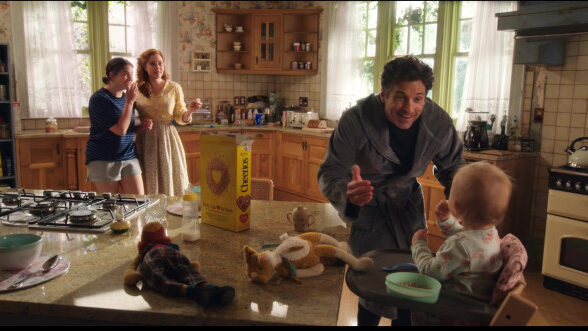
Branded Content: Match Audiences and Targets to Get Powerful Results
Get the best of both worlds with branded content. With these integrations, you’ll reach your target audience and have greater control of your messaging, which also ticks the brand safety box. This tighter control gives you the latitude to get into the specifics about your products.
You’ll see a variety of branded content on daytime or late-night entertainment, or in unscripted television. Appeal to the early risers soaking in the news on “The View,” afternoon viewers gearing up for the latest drama on Dr. Phil, night owls unwinding with The Tonight Show Starring Jimmy Fallon, or hopeless romantics tuning into the newest episode of The Bachelor.
The Proof’s in the Numbers: Appeal to 70% of Consumers with Branded Content
More marketers allocate advertising dollars for branded content every year, and this is likely to continue climbing. Experts expect branded content spend to hit $402 billion by 2025, up from $85.93 billion in 2020.
This big uptick isn’t surprising. Branded content works, and the research proves it.
- 22X: Branded content is 22 times more engaging than display ads.
- 70%: A majority of consumers want to learn about products through content.
- 86%: Branded content generates 86% higher brand recall, notably higher than pre-roll ads’ 65%.
These integrations require a sizable investment and work best for short-term goals.
If time is of the essence, branded content may be your ideal avenue to achieving your goal quickly. These integrations work well for time-sensitive messages for a specific marketing campaign, like back-to-school shopping or holiday deals.
When pursuing branded content opportunities, spend time to make sure your messaging resonates with your target audience. Brands that create emotional connections in their messaging are more likely to create brand loyalty for 82% of consumers.
By seeking partnerships that let you showcase your brand values, make impactful connections and get bottom line results.
Jimmy Kimmel Live! Driving Major Gains for Brands
Since January 2003, award-winning host Jimmy Kimmel has built a loyal fanbase with his popular late-night talk show. Now, 20 years and 20 seasons later, Jimmy Kimmel Live! is still a booming success, giving brands a prime opportunity to get in front of the series’ 1.8 million nightly viewers,
Similar to story-driven placements, branded content works for a variety of products. For example, Jimmy Kimmel Live! generated big results for Chime, the online banking app, thanks to its engaging content that appealed to the series’ target demographic and the show’s collaborative creative process.
Here’s how it worked: Jimmy introduced the 60-second segment and kicked it over to his trusty partner Guillmero Rodriguez, a fellow personality who plays a security guard. In addition to the custom branded segment, Chime received four additional bumpers and a segmented post to the show’s YouTube channel for 30 days.
Chime saw positive results from the branded content, including:
- Unaided brand recall: 88%
- Brand consideration or brand momentum: 7%+
- Brand rating: 14%+
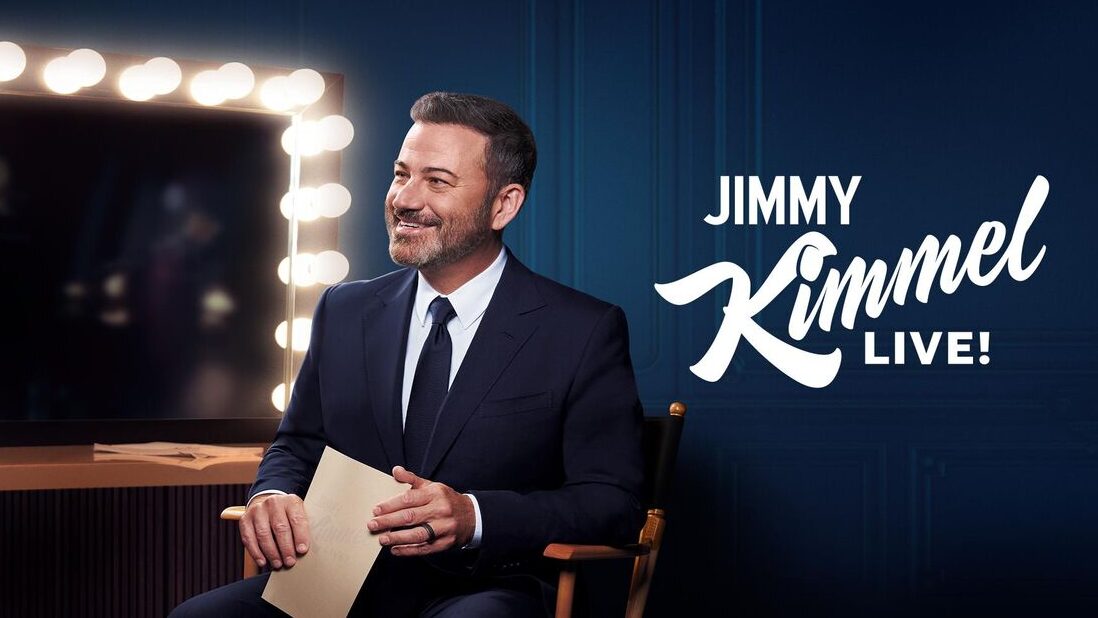
Virtual Placement: Easy, Scaled and Built for Product Placement’s Next Frontier
As technology evolves, so does product placement. With virtual placements, you can virtually insert your brand into content post-production, whether that’s via your digitally rendered product, billboard, or logo.
Virtual placements can integrate your product into a variety of content from movies to TV shows to video games and more. These placements can offer your brand flexibility. Because products get added after filming, you don’t have to worry about getting your product to a set, or having conversations with production partners months before filming. Plus, productions can add or remove content as needed.
While virtual placements present a whole new world of possibilities, it has its limitations. They’re typically restricted to a finite pool of content opportunities, don’t include character interaction, and have typically less on-screen prominence. Unlike story-driven placements where viewers can digest content after its release, virtual placements usually have an expiration date once your brand hits a certain impression threshold.
But, if you’re looking to blanket a target audience with impressions over a specific period of time, virtual placements may be the best approach for your brand to meet its goals.
What Are Virtual Placements’ Targeting Capabilities?
Virtual placements have taken off with the growth in streaming services’ and subscription on-demand videos. Media companies like Netflix, Peacock, Hulu, and Amazon recently announced new offerings for virtual product placements. Not only does this create new revenue streams for these companies, it signals the immense value that these integrations offer marketers.
Look at Hulu. Compared to the platform’s 30-second commercials, their product integrations generated 89% higher purchase intent and 47% higher brand awareness.
Virtual placements even helped media company Nielsen get a better grasp of their audience. Nielsen placed its product into popular content including Bosch, Reacher, Goliath, and The Tomorrow War. Using their content ratings solution, Nielsen analyzed their virtual placements in Amazon ads and found that compared to the average television viewing population, these integrations reached audience members who were:
- 45% more likely to make $200,000 each year
- 25% more likely to have four-plus years of college education
- 54% more likely to have two-or-more-person
With this information, Nielsen could inform their future marketing campaigns so they can connect with their target audience in a more impactful way.
CarMax Sleighed Slayed its Holiday Season with a Lifetime Virtual Placement
The holiday season is a viewer boon for cable channel Lifetime. Every year, the channel releases several seasonal films, typically focused on two characters who start off as foes but inevitably fall in love. While the plots usually follow the same structure, people can’t seem to get enough.
With Lifetime’s 2022 films each getting an average of 428,000 viewers, CarMax seized an opportunity to get their brand in front of their target audience. The company placed a virtual ad into the streaming platform for LifeTime’s 2022 hit, A Show-Stopping Christmas. Taking a unique twist on A Christmas Carol, the film has it all—ghosts of characters’ past, a rivalry turned romance, and even a Hollywood star to spice things up. The film captured viewers’ hearts—and Carmax was able to stay top of mind and present to Lifetime’s holiday audiences.

Going Further With a Trusted Partner to Build a Product Placement Strategy
Whether you’re at the start of your product placement journey or looking to hit the next level of a current program, these strategies can reap big rewards for your brand. With the myriad of content opportunities out there and varying product placement approaches, consulting an agency partner can help your brand determine how specific integrations can help meet your campaign’s KPIs.
Serving as an extension of your brand, agency partners use their expertise to find the product placement approach that’s right for your brand. From there, they’ll leverage their deep-rooted relationships within the entertainment industry to pair your brand with content opportunities that educate your target audience on what makes your brand stand out.


